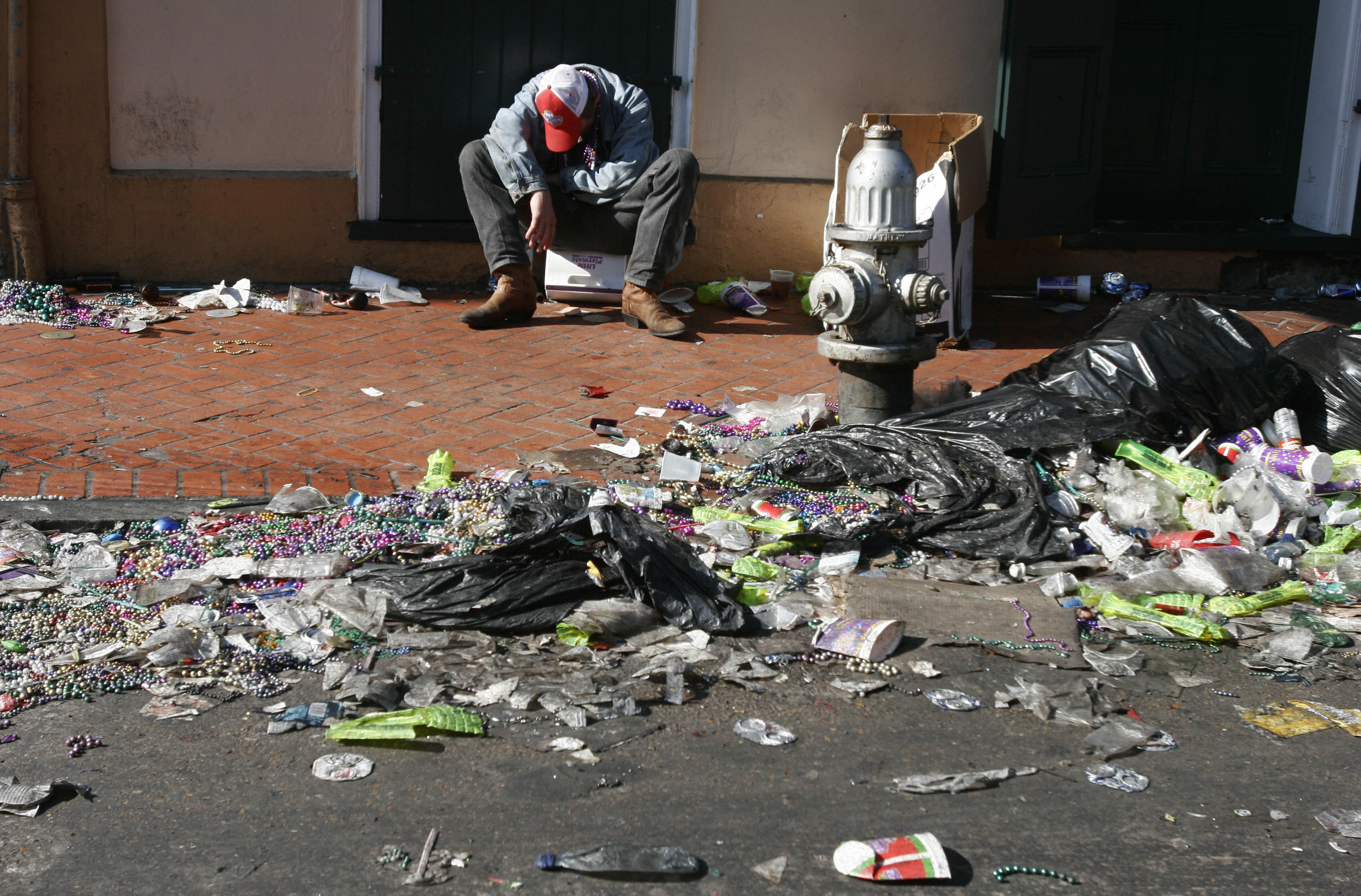
A man still recuperating from Mardi Gras celebrations sleeps near Bourbon Street in the French Quarter of New Orleans the day after Mardi Gras 01 March 2006.
New Orleans is a city that cherishes its past yet has not taken many steps to design its future. Katrina changed all of that. On August 29th, 2005, New Orleans came face to face with the errors of the past. The levees were inadequate and caused mass flooding. The systems the City had to cope with the problems after the levees broke were not ready. Under Mayor Nagin, the city was just beginning to deal with over 50 years of urban decline and decay. The school system was in disarray; there with no plan to deal with a narrow economic base, massive poverty and social frictions that paralyzed public and private institutions. August 29, 2005 was not the end but the beginning of the City waking up to and facing its problems.
In the two years since the storm the citizens of the city have said No to the Big Easy New Orleans. Instead they have undertaken a planning process that has actively involved residents and former residents in re-shaping the city. My role is to help the citizens craft a future that deals with racism, under education and urban neglect. There will have to be a very new New Orleans to overcome the past. We have taken the first steps of redeveloping the city with not just a new pattern of living but a new economy based on biomedicine, advanced distribution systems (air, ship and rail) and media technologies. The past is not prologue for New Orleans.
The Executive Director of Recovery Management for the City of New Orleans, Dr. Blakely is at the front lines of the rebuilding process. An expert in urban planning, Blakely held a vital role in the recovery of Oakland, California after the 1989 earthquake and fire. He is also the chairman of urban and regional planning at the University of Sydney, Australia, and the former head of the urban planning department at the University of California at Berkeley.